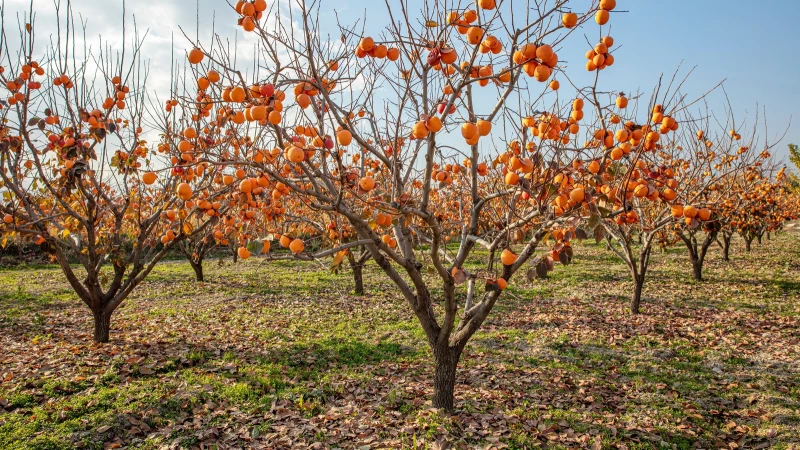Have you ever heard of the persimmon seed weather prediction? It's a fascinating folk tale that claims you can predict the winter weather by cutting open a persimmon seed. According to this tale, if the embryo inside the seed is spoon-shaped, it means you can expect deep snow during the winter. A knife shape indicates windy days, and a fork shape suggests mild temperatures.
But does this folklore have any connection to the persimmon tree's seed-planting schedule? Surprisingly, it does, albeit in a roundabout way. Persimmon seeds need a period of stratification, which is essentially a cold snap, before they can germinate. This means that persimmon seeds should be planted anywhere from late spring and fall to early winter.
If you're a gardener looking to grow a persimmon tree from seed, you'll want to see spoons in the seeds you slice open. A spoon shape indicates a winter full of heavy snow, providing the necessary chill for successful seed sprouting.
Wild fruit
Looking at how propagation has evolved in wild persimmon trees can give us some clues for seed planting times. Persimmon seeds are red-brown, oval-shaped, and about the size of a (flat) peanut. As you'd expect, they develop in the middle of the fruit as it ripens through the fall. The tree relies on animals to spread its seeds by eating the fruit. A 2017 study found that while this process wasn't necessary for germination, digested seeds sprouted faster than their undigested counterparts. From there, the seeds sit atop the soil under a layer of moist forest humus, waiting until warmer spring weather to root.
Persimmon seeds require approximately 100 hours of cold stratification to germinate. This natural process occurs during the winter when the seeds are exposed to cold temperatures and moisture, which helps to break down the hard outer shell of the seed. However, growing persimmon saplings from seeds does not always result in plants that have the same characteristics as the parent plant. Additionally, American persimmons are dioecious, meaning they have either male or female flowers. To produce fruit, both male and female plants are needed, but it can be difficult to determine the sex of a tree until it is established. These factors make sprouting persimmon seeds in a home garden more challenging compared to other propagation methods. However, if you have plans for a large stand of persimmons or simply want the experience, it can be a cost-effective option.
If you have recently purchased seeds that are dry and clean, you can easily rehydrate them. To remove the flesh from fresh seeds, follow these steps:
- Place the seeds in a small, clean glass jar.
- Fill the jar with water.
- Cover the jar with cling wrap.
- Leave the jar in a warm spot for a few days.
- Rinse the seeds in freshwater to remove the pulp.
Whether you bought the seeds or not, you can store them for three months to stratify them. Here's how:
- Place the seeds in a sealed bag.
- Fill the bag with moist sand, peat moss, vermiculite, or paper towels.
- Store the bag in your refrigerator.
- Occasionally check the seeds to ensure they don't dry out.
When spring arrives, you can sow the seeds in containers with at least 3 inches of potting mix. Alternatively, you can plant the seeds directly in the desired location for the tree to grow.








